
From our sponsor: Leverage AI for dynamic, custom website builds with ease.
For the most part, web designers work in teams or at least collaborate with other designers and/or developers. This means that at some point in your career you will be involved in many design critiques — some formal and some informal. Sometimes you’ll be the target and at other times you’ll be the one aiming so it’s vital to know how to handle, react and properly conduct yourself during these collaborative sessions.
Design critiques are awesome and they are a huge, gigantic educational opportunity for you, no matter what side of the fence you’re on. If held properly they are very good opportunities to collaborate and learn from other designers and developers. Some firms or companies have very specific guidelines and goals to follow during design critiques but what are the general unwritten rules of a great design critique?
We’ll talk about each one in more detail, but first let’s set the table. Here are ten unwritten (until now) rules you should keep in mind for your next design critique. They are written generally and should be applied to both sides of the equation.
- It’s Not About You
- Maintain Respect and Honesty
- Avoid Meaningless Words and Phrases
- Comparisons Should be Used Sparingly
- Be Specific
- Remember those Design Principles
- Understand the Design Approach and Context
- Ask Why
- Offer Suggestions
- Consider the Goals and Audience of the Design
Unwritten Rule Disclaimer
This is an important disclaimer for our list of rules. Beyond the ten we’ll talk about, there is one rule that is so crucially important to the success of any design critique and I have left it out on purpose. It’s so crucial that it needs to be applied to every rule. That rule is Be Positive. Seriously folks, I can’t stress this point enough. Maintain an upbeat and positive attitude throughout the process and your critiques will be wildly successful. If you cross into negative territory — not so much.
The screenshots that I have added are just some great web designs that I find inspirational, you can critique them if you like.
1. It’s Not About You
Well, at least it shouldn’t be about you. If it starts to become about you, your design critique will quickly slide downhill. A design critique must be about the design, the product, the app or whatever you are examining and also, how the designer can improve that design or alter the design to better meet the goals and needs of the project.
You must, must, must remove any personal bias toward the other designers, their skills, their knowledge or even there own personal set of ‘design rules’ that they might follow. The design should be critiqued on it’s own merit and not examined by personal bias toward any design element or concept. Also, if an element is examined and found to need improvement, the designer should refrain from arguing simply out of pride or personal bias toward that element – if it’s meaningful, argue your point, but if it’s more about you, that attitude will only damage the progress and success of the project.
2. Maintain Respect and Honesty
Respect is a huge thing when collaborating with others, especially in a design critique. Regardless of your first personal thoughts and feelings of the design, remember that the designer has generally put in a considerable amount of time, thought and care into constructing the design. Avoid being dismissive and refrain from jokes that might poke fun at the design.
Honesty is a great tool in a design critique. The designer needs to hear the truth and understand the reasons why a design is either working or not. Be tactful and respectful as you share your honest thoughts and criticisms. Likewise, when taking criticism, be respectful of what others have to say. It can be uncomfortable to critique someones work so keep that in mind. The person may be concerned about confrontation or offending you by critiquing the design.
In any case, open, honest and respectful collaboration is key here.
3. Avoid Meaningless Words and Phrases
Seriously, avoid the meaningless words and phrases that we all unfortunately use too often in the design community. It’s better to have a deep explanation rather than using some vague meaningless phrases like, “It’s not clean enough” or “It needs to be more sexy”. When it comes to design, words like “clean” are really subjective and contain no guidance to the designer.
Use more meaningful and descriptive phrases to better paint a picture of your critique. “All the elements are too close together and it makes it feel confusing or cluttered” or “The colors need to be more bold and vibrant, that may help with the lack of hierarchy” are probably better descriptors than “clean” or “sexy”. Don’t hold back on the description of why something works or doesn’t work — the more info the better.
4. Comparisons Should be Used Sparingly
This rule works both ways:
- The designer should avoid comparing his work to popular and trendy designs because that tends to water down any originality.
- The criticizer should avoid these same comparisons unless the design is in competition with the product you are comparing it to.
Comparisons can be bad for three reasons: One, comparisons can occasionally be taken as harsh criticism if the design really doesn’t look anything like the comparison. Two, there really is little information learned from making comparisons unless the comparison is specific and meaningful enough. Three, although you may want to share your inspiration with others, comparisons may make the others feel like you didn’t put enough time or effort into the design even if you have.
Try using comparisons only when there is direct and meaningful analogies.
5. Be Specific
We have already touched on this a little bit. The point of the design critique is to examine the design and see if it meets the design goals and expectations of the project. Also to give quality feedback to the design and/or designers who were behind its creation so that they can improve on the overall product.
If explanations are not specific, the communication of the critique will suffer and in turn the design and designer will suffer as well. The end result of a non-specific design critique is usually a final project that doesn’t meet the project goals, needs obvious improvement and your client may be hugely dissatisfied with the result.
6. Remember Those Design Principles
I have to brush up on these all the time, and you probably should before you enter into any design critique. From the designer’s stand point, make sure your design follows or takes advantage of these principles and be able to explain why design choices were made. From the criticizer’s point of view, make sure you can look at a design and see how it reflects and takes advantage of basic design principles.
If all parties are familiar with the basic design principles then critiques become instantly easier to handle and in some case much quicker. There is a design language there that can be easily understood, “I’m not really seeing a visual hierarchy…”, “You should make better use of line in the header elements where the…” These should be commonly understood principles among the majority of parties in the design critique — if not, brush up on them.
7. Understand the Design Approach and Context
For both parties, you should try to have an understanding of what the other person’s approach and context of the project are before you meet. If there is one thing that can kill a great design critique, it’s when nobody is on the same page. Designers approach design differently and have a different work flow and process than others. For example, if the designer approaches design and goals in a more passive fashion and you aggressively jump on them about a portion of design that needs improvement, this may result in a communication breakdown. For both parties, understand the approach and context of each other and be patient with each other.
8. Ask Why
This is a good rule, maybe one of my favorites. A good design critique should ask questions like “Why did you use the darker shade of orange versus a lighter one?” or “Why is there so much negative space between those two elements?” This kind of questioning does two things:
- Allows the designer to verbally roadmap why a decision was made.
- It gives the criticizer a better opportunity to understand the design better and also the designer’s approach.
Sometimes as designers we don’t even really know why we made certain choices. Sometimes it’s just as simple as “I thought is was cool”. Occasionally, there really isn’t a deeper meaning behind what you did. Asking those questions allows all parties to figure out why a particular element works or doesn’t, which can be very valuable information on future projects.
9. Offer Suggestions
Suggestions should be welcome at any design critique. But this goes along with number one, be respectful and honest. Be respectful with your suggestions and make sure that you don’t try to micro-manage the design process or bully your own personal style or design ideas where they are not wanted. A huge part of why designers are designers is because they love to try new things and be creative.
If your suggestions are too harsh, filled with personal bias or meaningless, then designers will have a hard time figuring why the design should exist that way and why their original design may not have been the best approach.
10. Consider the Goals and Audience of the Design
During the critique keep all comments and ideas revolving around the goals and audience of the project. Make sure that the original design goals are being met and that they weren’t forgotten. Keep in mind the audience of the project and if it needs, create personas and apply those personas to the design to better analyze how the user is going to view and interact with the design.
At the end of the day, we are designing for a purpose, a goal and the audience who will be using the product or service. It’s vital to keep your critiques centered around those goals and those users so that you are moving the design in the right direction.
Create Positive Progress
Design critiques are great tools that allow the designer and the team grow personally as well as allow the product to succeed through better collaboration. Design critiques are important and whether they are quick informal, five minute meetings or longer full team discussions, they should be held with a purpose and have some direction so that positive progress can be made.

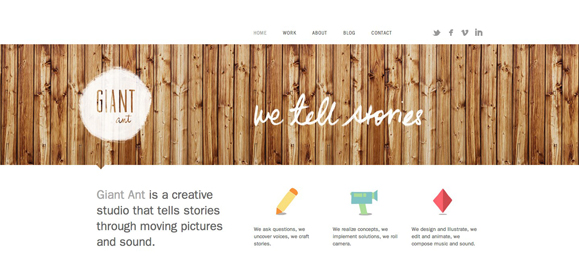
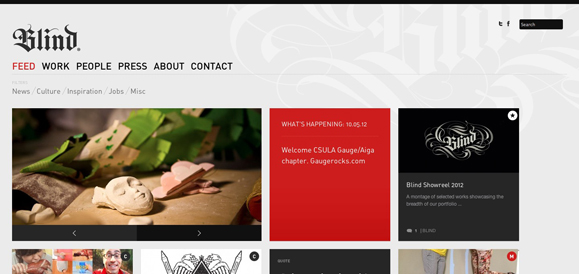
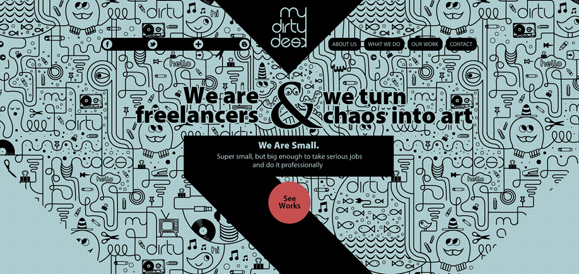

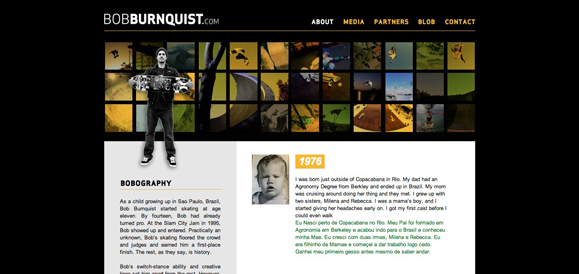







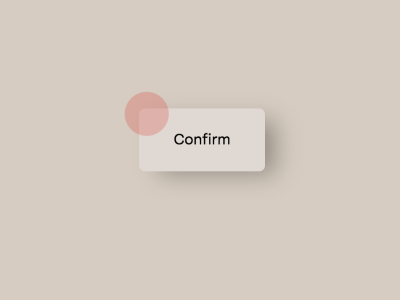

I suck at design critique largely because I’m way too negative. I don’t know how to present the crap that so many sites are in a way that the person doesn’t feel insulted. I think it may have something to do with my Aspergers.
The one thing I hate about most design is they often have bells and whistles that serve no functional purpose, are just eye candy, and often take away from functionality. Like that common JavaScript syntax highlight library that puts in line numbers even if there are only a dozen lines, line numbers that interfere with selecting the code to copy it and take away valuable horizontal space. Stuff like that, I guess some people like it but it annoys the hell out of me and I don’t know how to tactfully point out how flawed it is.
Anyway, thank you for this article. It may help me learn.
Line numbers are good usually in tutorials where tutor can explain snippet of codes based on its line number. And I agree there is a functionality flaw in there if they fail to provide copy to clipboard button. I have come across many such syntax highlight snippets but most of them have copy to clipboard button attached to it. I think good visual is important sometimes extra decorations too (but it all depends on type of service/product website is focused on) . I would say Design must not overpower functionality and vice versa! there must be proper balance of design and functionality to build a successful website.
As usual, fantastic read.
Completely agree with the point you make about bouncing work off of other designers and peers. Your best work always comes from when peers critique other peers work.
The hardest factor I found from going into a Freelance environment from a team environment is I have no direct peers to critique my work.
I want to add a rule we had at school that always made things challenging and forced you to think hard about what you wanted to say:
Don’t use the word “like”.
Whoa, that is a good one. That would be hard, but that will also make you dig deeper into why you “like” it and be able to better communicate why you do. Good call.
Great article Pat.
Point number 3 really stood out to me in my own personal workplace experiences. I often get manager’s (not design managers, general managers for the company) and directors giving critique with no meaning at all, ie: “It needs more pop”, “it just doesnt feel right, you know”. It frustrates me because i can understand if people give me a reason why my design is lacking or needs improvement, but phrases like that leave me actually doubting the person critiquing my work.
What is your opinion on non-designers criticizing the work of professional designer’s?
^ This is something i am facing a lot recently, with members higher up in the company actually having “design authority” over what goes out, but often those people are the same people saying the design “needs to be more edgy with more pizzazz!” lol.
Ya, I faced this exact situation quite a bit at a couple of places I’ve worked for. I think it’s perfectly fine to get feedback and critique from lots of differing sources – especially from people who really aren’t heavily trained or practiced in design. But ya, it pretty hard when non-designers don’t really know how to express themselves. I had a non-designer manager use that exact phrase “It needs more pop” a have dozen times or so – drived me nuts.
One thing I tried in the past, that worked pretty good, was pull in another designer in my design reviews with my non-design manager. Not really to “have my back”, but by nature the other designer can help clarify and facilitate the communication. Also, I started asking direct questions like “what part of the design needs to pop?”, or “show me what you mean by ‘edgy’?”
It’s great getting feedback from non-designers, I think it helps our brains unplug and detach and see our designs from a different perspective. But ya, I think it’s up to us to educate them a bit.
Thanks!
Great write up Patrick!
I often think about your 3rd point when I get feedback at work. I feel like some people are facing difficulties to express themselves when it comes to design critique.
Ya, it’s true. It can be difficult for some to communicate what’s not working for them. Asking what they mean by those ‘buzzwords’ I think is a great place to start and encouraging them to describe what doesn’t work in a more descriptive way — also, letting them know you won’t get offended can’t hurt either.
Great write-up and very appropriate to a situation I am currently facing at work. Thinking it’s worth forwarding this article to several folks who provide said feedback.
Suggestion: Why not make “Be Positive” the number 1 rule? I agree that it’s super-important. Also because all the other rules must follow it in order to someone to be successful in giving/receiving criticism.
Again, I think this is a great list and will definitely be sharing with my cohorts. Thanks for posting!
Thanks! I’m glad you like the article. Ya, it’s true, I probably should have made ‘be positive’ be the first point. Really it is a part of each one and I could probably end each point with “… and be positive.” It really is the key to any critique.
Great article! I’m considering showing it to a client of mine with whom communication is going pretty bad at the moment…
Great article sir! I’m new in the webdesign, and yes sometimes people have some difficulties to explain their expectations.
Patrick,
I love your rules to design critique. This is definitely going in my “must re-read” bookmarks folder.
Thanks!
This will helps me a lot, escpially when i critique some of my subordinates design, sometimes i become rude when giving my opinion, with this article i will change the way i used to do.
Thanks!